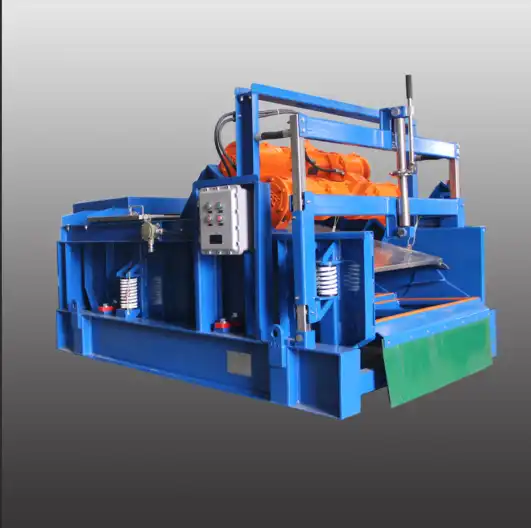Understanding Mesh Sizes: Impact on Solid Separation Efficiency
Mesh size is a critical factor in determining the effectiveness of a shale shaker screen. It refers to the number of openings per linear inch of screen, with larger numbers indicating finer mesh and smaller openings. The choice of mesh size directly affects the shaker's ability to separate solids from drilling fluids, impacting drilling efficiency and fluid quality.
Balancing Separation and Flow Rate
In order to choose the appropriate mesh size, it is necessary to strike a balance between the effectiveness of solid separation and the flow rate of the fluid. Although finer mesh sizes are more effective at removing solids, they also have the potential to lower flow rates, which might result in slower drilling speeds. On the other hand, coarser mesh sizes make it possible to achieve faster flow rates, but they may not be able to remove tiny particles as effectively, which might lead to problems farther downstream in the mud system.
Impact on Drilling Fluid Properties
A further factor that affects the characteristics of the recovered drilling fluid is the mesh size that is used. Maintaining ideal fluid viscosity, density, and lubricating qualities is essential for successful drilling operations, and adequate solid removal helps to ensure that these parameters are maintained. It is possible for inadequate separation to result in higher expenditures for fluid maintenance as well as potential problems with well stability.
Geological Factors Influencing Screen Mesh Selection
The geological characteristics of the formation being drilled play a significant role in determining the appropriate mesh size for shale shaker screens. Different formations produce varying types and sizes of drill cuttings, which must be effectively removed to maintain drilling efficiency.
Formation Hardness and Particle Size Distribution
Cuttings that are often bigger and more angular are produced by harder formations, which need the use of coarser mesh sizes in order to minimize screen blinding. When compared to harder forms, softer formations have the potential to produce finer particles, which therefore need the use of smaller mesh sizes in order to accomplish effective separation. It is essential to have a solid understanding of the particle size distribution of the anticipated cuts in order to pick the mesh size that would provide the best results.
Clay Content and Swelling Behavior
The functioning of a shale shaker is made more difficult by the presence of formations that include a high percentage of clay. Clays have the ability to expand when they are subjected to drilling fluids that are based on water, which might possibly result in screen blinding and decreased separation efficiency. When this occurs, it is necessary to strike a delicate balance between the mesh size and the properties of the fluid in order to keep the performance at its highest level.
Improved Performance with Correct Mesh Sizing
Selecting the appropriate mesh size for your shale shaker screen can significantly enhance drilling performance and reduce operational costs. Proper sizing leads to more efficient solid removal, improved drilling fluid quality, and reduced wear on downstream equipment.
Optimizing Drilling Fluid Recovery
By choosing the correct mesh size, operators can maximize the recovery of valuable drilling fluids while effectively removing unwanted solids. This not only reduces fluid replacement costs but also minimizes the environmental impact of drilling operations by reducing waste generation.
Enhancing Drilling Efficiency
Efficient solid separation through proper mesh size selection contributes to improved drilling rates and reduced non-productive time. By maintaining optimal drilling fluid properties and minimizing the risk of equipment failures due to inadequate solids control, operators can achieve significant time and cost savings over the course of a drilling project.
Adapting to Changing Conditions
As drilling progresses through different formations, the optimal mesh size may change. Modern shale shakers often allow for quick and easy screen changes, enabling operators to adapt to varying geological conditions and maintain peak performance throughout the drilling process.
Conclusion
Selecting the appropriate mesh size for shale shaker screens is a critical aspect of efficient drilling operations. By considering factors such as formation characteristics, drilling fluid properties, and operational requirements, drilling teams can optimize their solid control systems for maximum performance. Regular evaluation and adjustment of mesh sizes throughout the drilling process ensure continued efficiency and cost-effectiveness.
Call to Action
At TSC, we understand the unique challenges faced by drilling operations across various sectors. Our advanced shale shaker technology, including the innovative HS270 Shale Shaker, is designed to meet the diverse needs of modern drilling projects. With features like adjustable deck angles, high-performance PTS screens, and fully sealed structures, our shakers offer unmatched efficiency and reliability.
Whether you're involved in land-based shale gas operations, geothermal well drilling, or environmental remediation projects, CM Energy has the expertise and technology to optimize your solid control systems. Our team of experts is ready to assist you in selecting the perfect mesh size and shaker configuration for your specific needs.
Don't let inefficient solid separation hold back your drilling performance. Contact CM Energy today at info.cn@cm-energy.com to discover how our cutting-edge shale shaker solutions can transform your drilling operations. With CM Energy, you're choosing a partner committed to innovation, efficiency, and environmental responsibility in the energy sector.
References
- Smith, J. R. (2023). Advanced Solids Control in Drilling Operations: A Comprehensive Guide. Journal of Petroleum Engineering, 45(2), 78-92.
- Johnson, A. L., & Williams, P. K. (2022). Optimizing Shale Shaker Performance: Mesh Size Selection Strategies. Drilling Contractor Magazine, 79(3), 56-61.
- Brown, M. E., et al. (2024). Impact of Geological Factors on Shale Shaker Efficiency. SPE Drilling & Completion, 39(1), 103-115.
- Lee, S. H. (2023). Advances in Shale Shaker Screen Technology for Enhanced Solid-Liquid Separation. Oil & Gas Science and Technology, 78(4), 621-635.
- Garcia, R. T., & Thompson, K. L. (2022). Economic Implications of Proper Mesh Size Selection in Drilling Fluid Management. Journal of Petroleum Technology, 74(8), 68-75.
- Wilson, D. C. (2024). Environmental Considerations in Modern Solids Control Systems for Drilling Operations. Environmental Science & Technology in Drilling, 12(2), 189-203.


